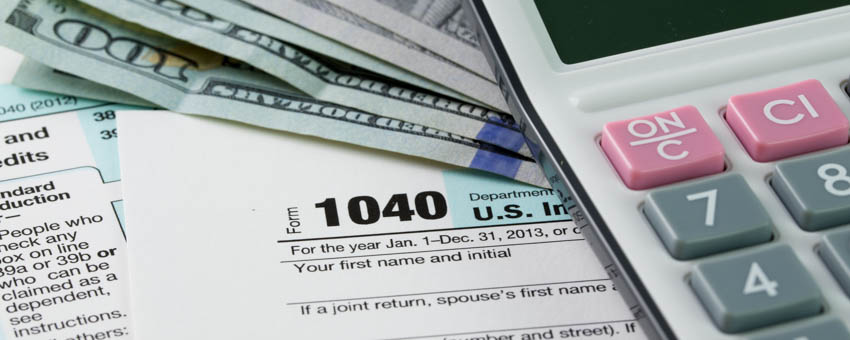Our Story of Recovery: The 2008 Recession
Updated on September 1, 2022From The Small Business Owner’s 2022 Economic Relief Guide
I tell anyone who will listen:
Marketing through a recession or economic downturn is a MUST to your business’s survival — but I guess because I stand to profit from selling marketing services (even though I never say “market with my company“), my advice goes through one ear and out the other.
So rather than just tell you what I think is best, I’m going to walk you through HOW I learned it.
Here is my be-all, end-all, how-I-almost-lost-it-all-but-learned-a-lesson story:
PostcardMania was founded in 1998, and 46% of our revenue was from clients who were in the mortgage and real estate industry. Their business basically sustained my business for 10 years.
Now, this story really starts in 2008, when the bottom fell out of the real estate market first, and then our entire economy.
At that point, the real estate and mortgage industries made up 46% of our revenue.
We lost thousands of clients almost instantly, and our revenue dropped significantly. For the first time in the history of my company, we weren’t growing and expanding from week to week, quarter to quarter — we were contracting, and fast.
The crazy thing was:
It wasn’t even that bad for us until 2009. That’s when our own crisis hit — almost a year after the housing crisis and market collapse. In 2008, we were only down about $150,000.
But 2009…that was another story. Some weeks, I wasn’t even sure we could make payroll. But we always did, somehow – instead of paying other bills.
Operations quickly became unsustainable, and I knew we would have to make cuts somewhere.
I was dead set against laying anyone off. That was not an option for me.
If I wasn’t going to cut staff, advisors told me that the next best option would be to cut our postcard marketing budget. They looked at the price of our postcard marketing per week and said, “Wow! You could save a LOT of money by cutting that way back.”
Against my better judgment, I listened and cut our marketing back.
As a result, new incoming leads and revenue suffered more than any of us could have anticipated.
Not only was 2008 our worst year yet, 2009 was even worse. We were down 15%, and 15% of $30 million is a hefty chunk of change. Cutting our marketing budget compounded our issues even further. Because we had fewer leads coming in overall, our revenue couldn’t rebound.
Meeting payroll became my only objective. My business was surviving on a week-to-week basis (the equivalent of paycheck-to-paycheck), and only just barely. My finances were a mess. My hair went from black to entirely — and I’m talking entirely — white within one year. It was hell. I just have to say — thank gawd for hair dye!
Plus, I didn’t pay myself much during that time. I cut my own pay by 75% and took a stipend so I wouldn’t feel like it was all for nothing. I’m lucky I have a husband with a business, and the crash actually helped his business!
In 2009, it kind of happened suddenly — like BOOM — we were WAY down in a couple of weeks. Thankfully, I’m a metrics nut and had been tracking everything already. That’s when I did a deep dive into all the other industries that were buying from us. I looked at how much money I had spent on marketing to each industry. Then, seeing what my return was (and also seeing the industries that were finding me organically), I figured out how much I made from each industry and funneled some additional marketing budget to the industries that were performing best.
I increased our marketing budget back to its pre-crash total, and our numbers quickly recovered. We made up lost ground and then some.
I ONLY dipped 15% in 2009 when it could have been much worse. And 2010 was a new highest-ever year for revenue.
Why?
It all comes down to something that I instinctively knew to be true about marketing my business that my financial advisors couldn’t see or understand… and that I should have done a better job of defending.
It essentially comes down to the return on investment we get from our marketing and the lifetime value of a single client.
You see, we get a very low response rate on our postcard mailings. And direct mail isn’t cheap.
So, to an advisor, this looked like a huge loss and an easy place to cut expenses.
I’ll give you a real-life example:
Out of the roughly 180,000 postcards we mail each week, we get about 200 direct responses per week. (A direct response would be someone calling the tracking number on their postcard or visiting the URL on that postcard versus googling us and finding our webpage.)
That’s a response rate of 0.001%.
Of course, we also receive additional leads who either don’t mention that they heard about us from a postcard, or say they heard about us some other way, when in fact we find out later they’ve been receiving our postcards for some time.
But thankfully:
Response rate is not the end-all when it comes to marketing.
The only statistic I care about when measuring response is the return on investment (ROI) I get from my marketing.
ROI is calculated as:
- Money made
- Minus what was spent
- Divided by what was spent
- Multiplied by 100 to find the percent
Here’s a real example of PostcardMania’s marketing ROI. I’ll use a year from a while back so you can see how the return continues to grow as the years go by.
In 2013, we spent $2,875,230 on marketing.
That same year, we brought in $4,562,121 from new leads generated from those marketing dollars.
That is a 59% ROI on our marketing spend.
Then, the next year (2014), we brought in an additional $1,520,682 from those leads that came in in 2013.
This grew the ROI for our 2013 expense to 111% — meaning we made all of our money back PLUS an additional 11% of the amount we spent.
Then, in 2015, we brought in an additional $1,389,865 from those leads that came in in 2013, Growing our ROI for our 2013 spend to 159%.
We continued to make money from those leads through future years. By the end of 2019, we had made a total of $13,130,068 from those leads generated in 2013 from our $2,875,230 investment. This is a 357% ROI on our marketing spend, and it will continue to grow from here.
Bottom line:
If we hadn’t spent that $2.8M on marketing, we would have made $13M less over the last 6 years!
This is something that my 2008 financial advisors couldn’t foresee — and, to be honest, many business owners today would struggle with.
For my fellow business owners, this usually comes down to a lack of tracking.
If you don’t know where your leads are coming from, how can you know the value of your marketing? Or the return on your investment?
For those companies that do closely track their marketing, one thing becomes clear…
Marketing is a vital part of your business’s overall health and wellbeing, and cutbacks (however essential they might seem at the time) run the risk of exposing your business to extended revenue reductions. I certainly learned this lesson the hard way.
In my business, I know one thing for sure:
I will never, ever cut my marketing budget again.
Now is the time to support each other and remember that we’re all in this together — us small business owners!!
And if you want to hear about how we survived the NEXT huge economic setback — COVID-19 — you can read about it here.
Special Offer for Small Businesses!
If there’s anything we don’t want you to do, it’s stop marketing! To help keep you going, we are offering 10% off any marketing campaign you start with us. Launching an Everywhere Small Business campaign that couples direct mail with digital ads will help you bring in leads and drive-up revenue.
To get started and claim this offer, connect with one of our expert marketing consultants at 1-800-628-1804. They will be able to tailor a marketing strategy that fits your needs and your budget.
2 Comments
Richard, we appreciate you so much as a client! Thanks for sharing!






I visited with you, attended your seminar and the dinner cruise in 2011. Your story is so sincere and helpful.
We continue to use your services and it helps us grow.
Thank you
Richard Raj
President, Office Care , Inc.